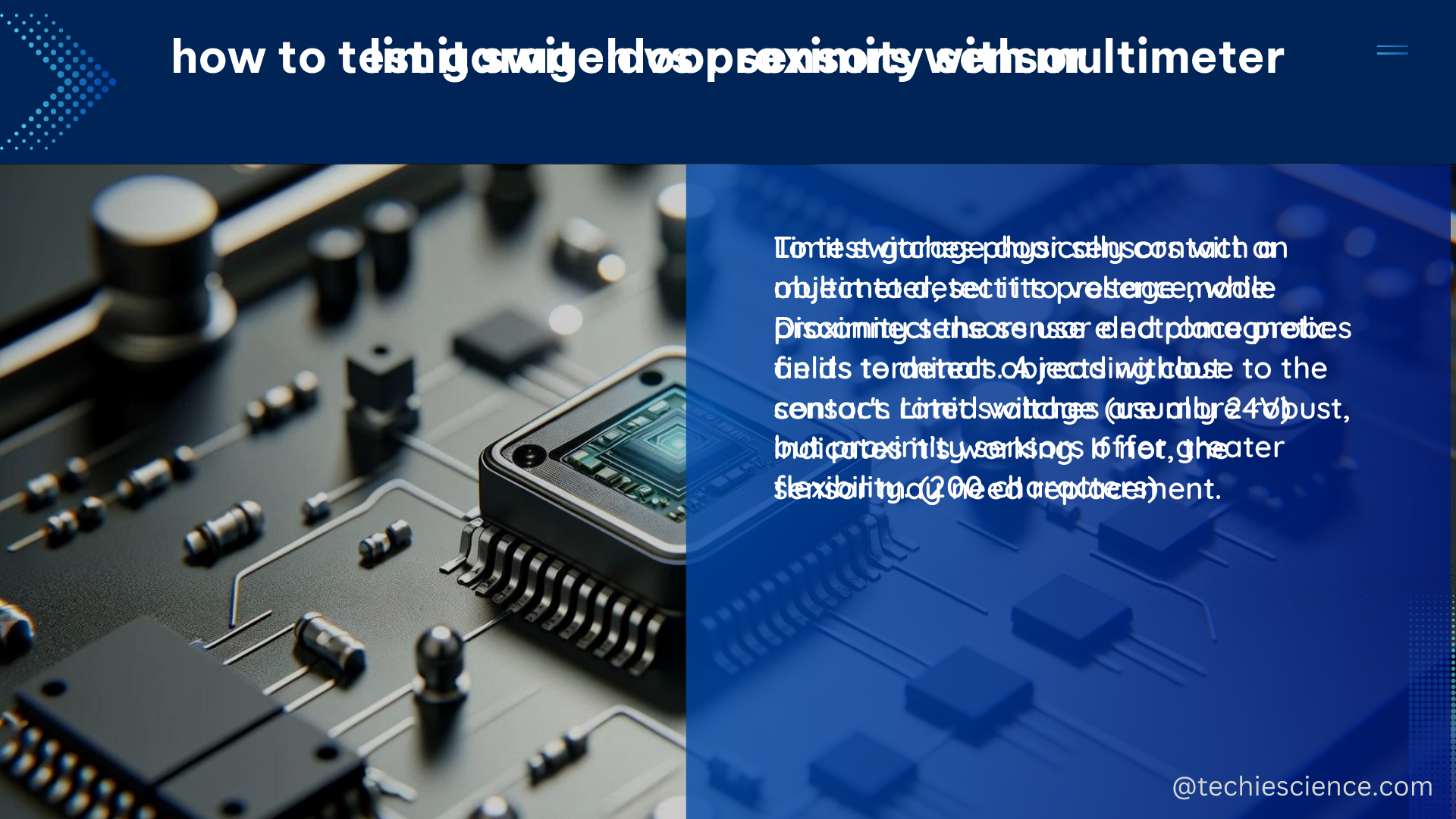In the realm of industrial automation and control systems, the choice between limit switches and proximity sensors is a critical decision that can significantly impact the performance, reliability, and cost-effectiveness of a given application. This comprehensive guide delves into the technical specifications, advantages, and use cases of these two sensor technologies, providing a detailed comparison to help you make an informed decision.
Operating Force and Travel Distance
Limit switches are mechanical devices that rely on physical contact to detect the position or movement of an object. The operating force, measured in Newtons (N), is the amount of force required to actuate the switch. Typical operating forces for limit switches range from 1 N to 50 N, with higher forces generally indicating more robust and durable designs.
The travel distance, measured in millimeters (mm), is the distance the actuator must move to change the state of the limit switch. This parameter is crucial in applications where precise positioning is required, as it determines the minimum distance the object must travel to trigger the switch. Limit switches commonly have travel distances ranging from 1 mm to 10 mm, with higher-end models offering adjustable travel distances for increased flexibility.
Sensing Range and Response Time

Proximity sensors, on the other hand, use electromagnetic or optical principles to detect the presence or absence of an object without physical contact. The sensing range, measured in millimeters (mm), is the distance over which the sensor can reliably detect an object. Proximity sensors typically have sensing ranges from 1 mm to 1000 mm, with the specific range depending on the sensor technology and the material properties of the target object.
The response time, measured in milliseconds (ms), is the time it takes for the proximity sensor to change state in response to a change in the presence or absence of an object. Faster response times, typically in the range of 0.1 ms to 10 ms, are desirable in applications that require rapid detection and reaction, such as high-speed conveyor systems or robotics.
Durability and Accuracy
Limit switches are generally more durable and reliable than proximity sensors, as they have no moving parts that can wear out or fail over time. This makes them well-suited for harsh environments, where they can withstand exposure to dust, moisture, and mechanical stress. Limit switches can typically operate for millions of cycles without degradation in performance.
Proximity sensors, on the other hand, are more susceptible to environmental factors and may require more frequent maintenance or replacement. However, they often offer superior accuracy and repeatability compared to limit switches, as they do not rely on physical contact to detect the presence of an object. Proximity sensors can achieve positional accuracies in the range of 0.1 mm to 1 mm, depending on the sensor type and the specific application requirements.
Application Considerations
When choosing between limit switches and proximity sensors, it’s essential to consider the specific requirements of your application. Limit switches are well-suited for applications where physical contact is acceptable or even desirable, such as in the detection of door openings, the positioning of robotic arms, or the monitoring of conveyor belt movements. Their durability and reliability make them a popular choice in harsh industrial environments.
Proximity sensors, on the other hand, excel in applications where non-contact detection is preferred, such as in the presence detection of objects on a conveyor belt, the monitoring of material levels in a hopper, or the sensing of approaching vehicles or pedestrians. Their faster response times and higher accuracy make them ideal for applications that require rapid and precise detection.
Sensor Technologies
Limit switches can be further classified into several subcategories based on their actuation mechanism, including:
- Mechanical Limit Switches: These switches use a physical lever or plunger to detect the presence or absence of an object.
- Magnetic Limit Switches: These switches use a magnetic field to detect the presence or absence of a ferromagnetic object.
- Photoelectric Limit Switches: These switches use light-based detection to sense the presence or absence of an object.
Proximity sensors, on the other hand, can be divided into the following main categories:
- Inductive Proximity Sensors: These sensors use an electromagnetic field to detect the presence of metallic objects.
- Capacitive Proximity Sensors: These sensors detect the presence of objects based on changes in the electric field.
- Photoelectric Proximity Sensors: These sensors use light-based detection to sense the presence or absence of an object.
- Ultrasonic Proximity Sensors: These sensors use sound waves to detect the presence and distance of objects.
Each of these sensor technologies has its own unique characteristics, advantages, and limitations, which should be carefully evaluated based on the specific requirements of your application.
Conclusion
In the world of industrial automation and control systems, the choice between limit switches and proximity sensors is a crucial decision that can have a significant impact on the performance, reliability, and cost-effectiveness of your application. By understanding the technical specifications, advantages, and use cases of these two sensor technologies, you can make an informed decision that best meets the needs of your project.
Whether you’re working on a DIY project or a large-scale industrial automation system, this comprehensive guide on limit switches vs. proximity sensors provides the detailed information you need to make the right choice for your application.
References
- NUREG-1959 “Intrusion Detection Systems and Subsystems”
- Sensor Technology Handbook – OLLINTEC
- Fundamentals of bio-electrochemical sensing – ScienceDirect.com

The lambdageeks.com Core SME Team is a group of experienced subject matter experts from diverse scientific and technical fields including Physics, Chemistry, Technology,Electronics & Electrical Engineering, Automotive, Mechanical Engineering. Our team collaborates to create high-quality, well-researched articles on a wide range of science and technology topics for the lambdageeks.com website.
All Our Senior SME are having more than 7 Years of experience in the respective fields . They are either Working Industry Professionals or assocaited With different Universities. Refer Our Authors Page to get to know About our Core SMEs.